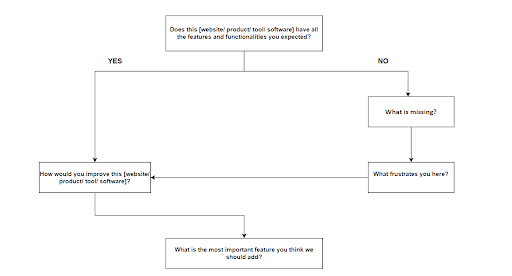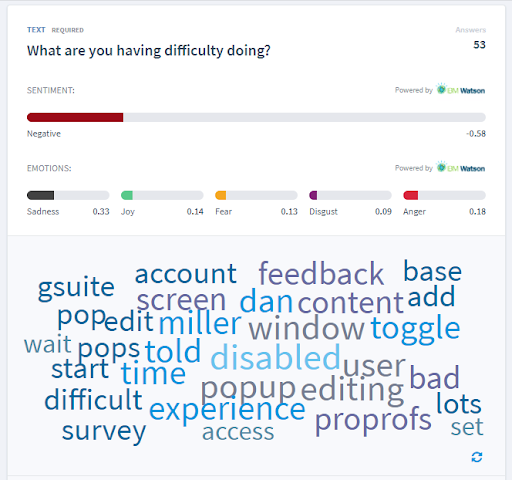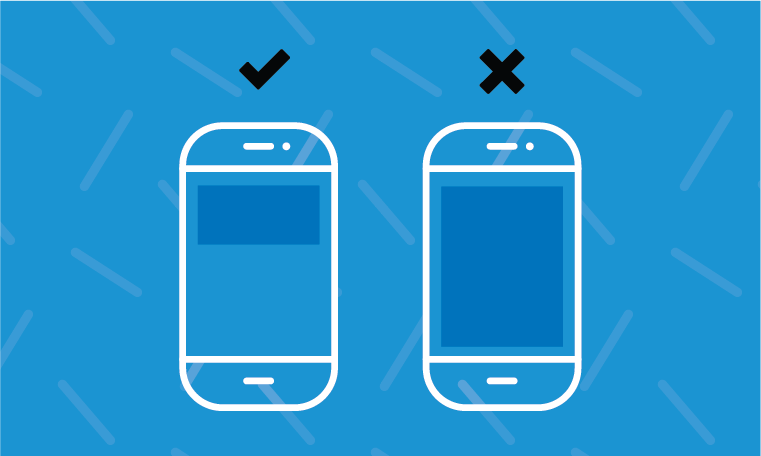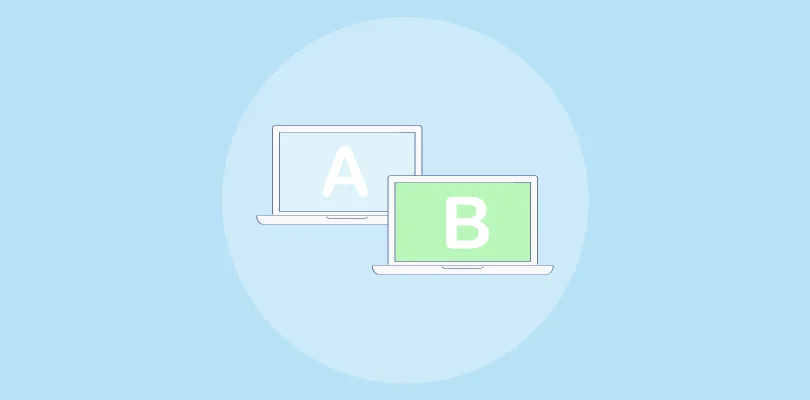
We all understand the primary benefits of customer feedback. Then how is this blog any different from the others out there?
Because we won’t bore you with the things you already know. We will show how real-life brands are taking advantage of customer feedback and then straight up give you essential points from our expert teams on how you can implement these in your business plan.
Here are the first few stats to give you a glimpse of the importance of customer feedback:78% of people prefer brands that collect and accept customer feedback.

53% of the marketers also put customer feedback as the number one tactic to improve customer experience.
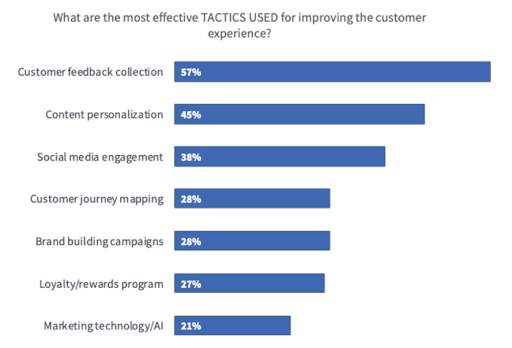
So, let’s start with what client feedback is, and then we will jump right into the real-life case studies of how customer feedback benefits the brand. We have also added specific survey questions to each point to help you get started.
Here we go.
What is Customer Feedback?
Customer feedback is defined as the data you collect from your customers. It can be a reported issue, bug, complaint, suggestion, or insights related to their experience with your website, app, or product.
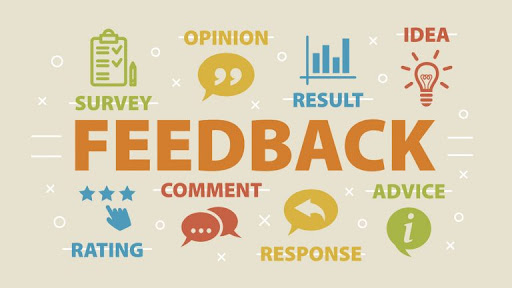
If collected correctly, one of the most significant benefits of customer feedback is its reliability. It can help you spot unknown problems with your product that might be causing customer churn and revenue loss.
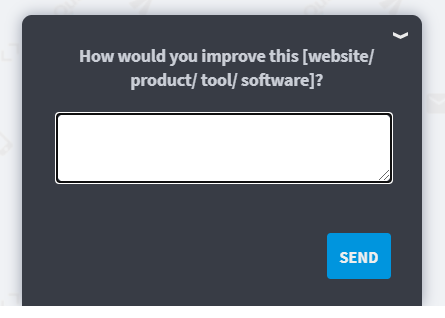
And nobody wants that in their business.
Another big advantage of collecting feedback data is its ease of implementation.
No, we are not talking about personal interviews and focus groups. We understand they are expensive methods and require plenty of resources to pull off. These methods are more suited for in-depth research when focusing on a new target market.
For continuous experience and conversion optimization, surveys are your best bet. Today, most survey tools can fit in anyone’s budget and provide advanced techniques to make data analysis faster.
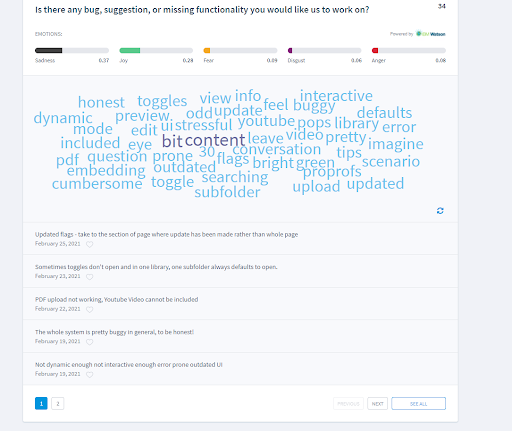
As we will see in the following section, you can easily collect feedback using surveys and gather the required data in hours, not days, to implement the insights in various teams in your organization.
Watch: How to Collect Customer Feedback
11 Benefits of Customer Feedback in 2024
We promised you real-life examples to show the advantages of client feedback and real-life examples you shall have. We have gathered different case studies to give an idea of the wide variety of use cases from different industries.
There might be a crossover of ideas or takeaways from one study to another. But don’t worry; it only shows how the benefits of customer feedback can filter at different levels to stimulate overall growth.
Here are 11 benefits of customer feedback you can experience at your end with proper implementation.
- Build Your A/B Testing Hypothesis
- Design Better Website & Products
- Build Product Roadmap & Deliver Optimal Product Solutions
- Understand & Segment Your Audience
- Uncover Cross-Sell & Upsell Opportunities
- Design Effective Marketing Campaigns
- Improve Customer Experience
- Increase Retention & Reduce Churn
- Generate More Leads
- Uncover Customers’ Pain Points
- Increase Revenue
Let’s now have a look at these in detail.
1. Build Your A/B Testing Hypothesis
Hootsuite successfully validated its hypothesis and redesigned its website using customer feedback to earn a 16% lift in conversion.
A/B testing requires a working hypothesis outlining what you want to test to increase conversions on your website or app.
But among the multiple elements available for testing, how will you decide which one needs optimization?
That’s where customer feedback and research can help you.
Let’s learn how Hootsuite did it.
For Hootsuite, the biggest challenge was to find why visitors were bouncing off the landing page. So, the team hypothesized that the people needed more information about the product’s core functions and features.
To validate this idea, the growth team added a small on-site survey asking the visitors whether the information was enough to make a decision.
Do you know what the surveys showed?
- Around 65% of the people felt that they needed more information on the page to make a decision.
- People knew what Hootsuite was, but the page didn’t show how it worked.
- The page didn’t communicate the product’s core functions.
How did the team take advantage of this customer feedback?
- Revamped the page to add the value proposition and core functionality.
- Added a screenshot of the dashboard to show how Hootsuite worked.
- Published more information about different pricing tiers and how each one was different.
- Added relevant testimonials to illustrate real-life product usage.
When they tested the new page against the original design, it showed a 16% lift in conversions with 98% statistical significance.
Key Takeaways to Reap Benefits of Customer Feedback in A/B Tests:
- Deploy surveys on your website to explore why people are not completing the purchase.
- You can add them to the checkout page and show them after the visitor scrolls down to the signup button.
- Target exiting visitors to uncover their pain points and grievances.
- Find out if the visitors could find the information they are looking for or faced some issue.
- You can also use behavioral mapping like heatmaps or screen recording to visualize customers’ actions.
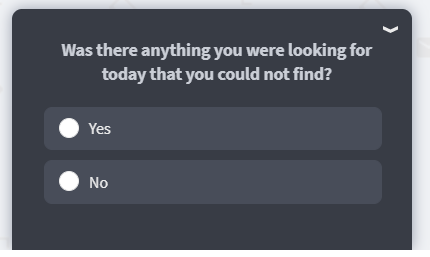
Survey Questions to Build Your A/B Testing Hypothesis:
- What did you come to this site to do today?
- What were you trying to find on this page?
- Does this page have the information you were looking for?
- What other information would you like to view on this page?
- What’s preventing you from starting a trial?
- Is there anything stopping you from completing your purchase?
- What’s the one thing that almost stopped you from starting a trial?
2. Design Better Website & Products
MECLabs achieved a 34% boost in conversions for their client by aligning the website messaging with customers’ expectations & pain-points
When a leading health drinks company approached MECLabs to increase conversions on their homepage, the team started by understanding customers’ needs and expectations to design a better homepage.
The original homepage described the product’s features but offered no proposition about how it would help people solve their problems.

Déjà vu, right! Did we hear this before, but where? In Hootsuite’s case study.
The MECLAbs took a conclusive-driven approach to design the page and included customer pain points and needs in the website copy to demonstrate how the product would work for them.
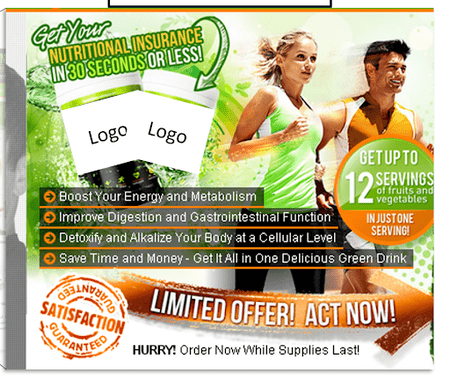
Can you guess which page won the A/B test – the original or the new one?
Yes!!! The new one. It outperformed the original page to increase the conversion rate by 34%.
Key Takeaways to Optimize Your Website:
- This study clearly shows that you can achieve better results if you find out how your potential customers perceive your products.
- That’s why customer feedback is important to design the messaging to make it easy to understand its features and usage in solving their problems.
- Directly ask the visitors if the product offering on your website is clear to them or not.
- Find out customers’ pain points and issues with the product by adding a simple feedback form or survey to different interaction points.
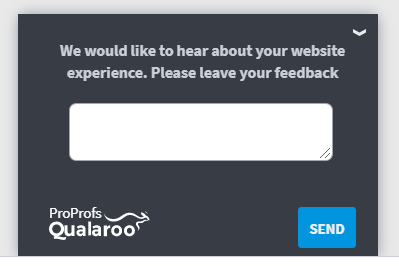
- Design unique value propositions to show different solutions your product can provide to the customers.
- Run regular A/B tests to optimize the website elements. You can pick one or two elements at a time to improve their design, messaging, or placement.
Wondering how to get started on A/B Testing?
Must Read: 25 Best AB Testing Tools
Survey Questions to Design Customer Feedback Surveys:
- Is there anything that doesn’t work the way you expected it to?
- Have feedback or an idea? Leave it here!
- Please rate your overall experience with our website today?
- How can we change your mind about signing up for an account?
- Is our product pricing clear?
- How can we make this website more useful for you?
- On this page, it seems like I should be able to…
- How can we further improve the checkout process?
- What caught your attention about this site in your search results?
3. Build Product Roadmap & Deliver Optimal Product Solutions
Twilio delivers optimal solutions in an agile and ever-changing technological environment with data-driven customer research strategies.
The following example from Twilio sums up our previous two points beautifully – how customer feedback benefits your entire organization to build and improve your products.
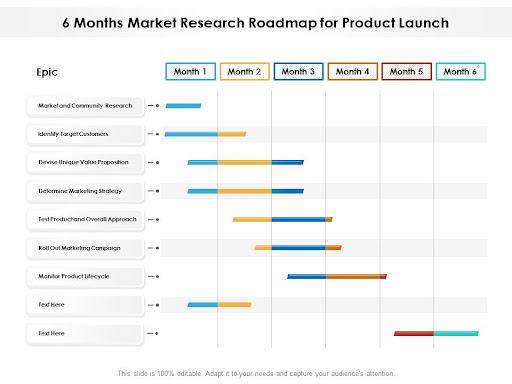
There are 18 different teams at Twilio that go from ideas to data-backed hypotheses using customer feedback to prioritize which ideas to test first.
And the product development team is one of them.
According to the Product Manager, Laura Schaffer –
“Customer discovery efforts are critical. How do you best put yourself in the customer’s shoes and do so in a way that is efficient and easy to do at all stages of product development?”
Twilio’s teams focus on an experiment-based approach to build the products and run post-delivery optimization. So, the biggest challenge is to fish the best ones among the ocean of ideas.
“The hard part usually isn’t coming up with the hypotheses for what might work best – it’s knowing which are the right ones to try first.” Laura Schaffer, Product Manager for Twilio’
Enters Twilio’s customer insights program.
Twilio uses targeted surveys to collect customer feedback at different stages of product development. It lets the teams ask questions and suggestions directly to plan the next course of action for the product.
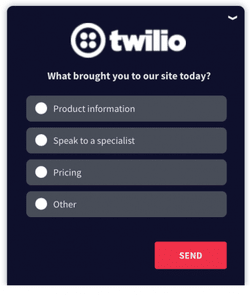
Various teams use the feedback to implement data-backed ideas into the development cycle and improve customer onboarding, engagement, and retention rates.
The process allows the teams to plan and deliver new functionality weekly to improve the tool.
Key takeaways to use feedback in the product development cycle:
- Install a feedback form or suggestions board to collect ideas from your customer base. You can choose the most commented or most upvoted ideas to include in your product roadmap.
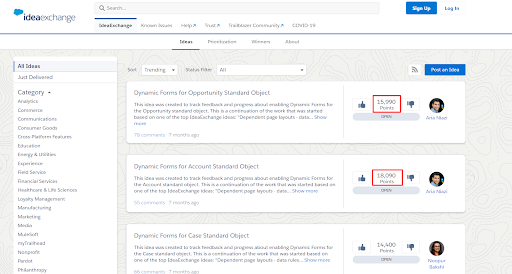
Use websites, social media, email, and other channels to deploy small surveys and collect feedback to build and improve your product roadmaps.

- Prioritize the release of new updates and features based on current market trends and what customers want to see in your product.
- You can also release a beta version of the new feature update to test how people receive it and work on the feedback to make it better.
Survey Questions to Collect Product Feedback:
- Of these following features, what’s the next feature we should build?
- How often do you use the following feature?
- How would you feel if we discontinued this product feature?
- What’s one feature we should add that would make our product indispensable for you?
- How would you feel if you could no longer use the following [Product/feature name?]
- Have feedback or an idea? Leave it here!
4. Understand & Segment Your Audience
Lego holds World’s No. 1 spot in the toy industry with years of user research & customer segmentation.
It took me two weeks to complete Lego’s Star Wars Death Star model. But boy did I love every moment of it.
Who hasn’t heard about Lego? The world’s biggest plastic brick game manufacturer.
But how did they achieve this status?
Listening to their customers, segmenting them into different groups, and engaging them on social media to convert them into brand promoters.
Lego Group was having trouble marketing its products on social media to engage more customers. So, they came up with the approach to implement behavioral analysis to understand their customers, build better relationships and generate new product ideas.
The exercise helped Lego segment different customer types and develop social media strategies to target each segment individually.
The group used six customer segments based on product usage and purchase history:
- Lead Users: People who help to provide insights to Lego during product design
- 1:1 Community: People who have provided their names and addresses to Lego
- Connected Community: People who have purchased Lego products and [have] also visited the outlets – LEGO shop or a Lego park
- Active Households: People who purchased Lego products in the last 12 months
- Covered Households: People who purchased Lego products once
- All Households: Those who have never bought Lego products
The next step was to actively engage with the top three segments using online communities and social networks to understand their preferences and turn them into ardent brand promoters.
One may think that it’s too much work. But do you know how it fared for the Lego group?
As of 2020, Lego leads toy sales worldwide, earning over $7,200 million annually.
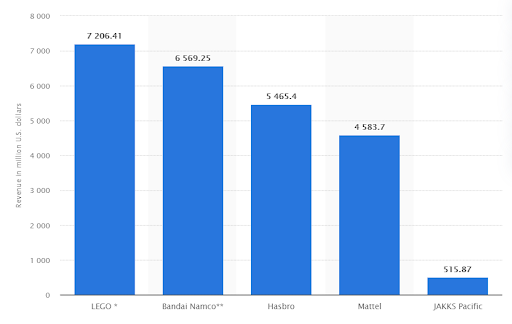
Key Lessons From Lego in the Importance of Feedback
- Identify different customer types among your target market. Each segment has different needs, problems, and issues.
- Differentiate them based on their demographic & psychographic traits, purchase value, product usage, and others.

- To prioritize negative feedback, you can also divide the customers based on their CX scores like NPS, CSAT, and CES.
- Target high-value customers to turn them into brand promoters. You can run loyalty programs and discount campaigns to target such customers.
- Add follow-up questions to your CX surveys to collect as much information as possible to uncover customers’ opinions, pain points, motivations, and preferences.
Here Are Survey Questions to Segment Customers:
- Please specify your age
- Please specify your gender
- Select your highest level of education
- What is your current occupation?
- What is your monthly household income?
- How often do you use [product name]?
- Where is your dream holiday destination?
- Have you ever boycotted a brand? If so, which brand and why?
- How much time do you spend on social media like Facebook and Instagram?
- Do you prefer to do your monthly grocery shopping online or through outlets?
- What influences your purchase decision more – product price or quality?
- How long have you been using the product for?
- How do you search for the products you want to buy?
- Please rate the following product features according to their importance to you.
Read Also: Creating a Customer Satisfaction Survey: Best Practices and More
5. Uncover Cross-Sell & Upsell Opportunities
Avis mapped their customers‘ choices to increase the average order value per customer with relevant add-ons.
How do you think Amazon’s ‘suggested for you’ section works? The eCommerce giant uses advanced recommendation algorithms to track your purchase and browsing history to suggest new products and complementary accessories.
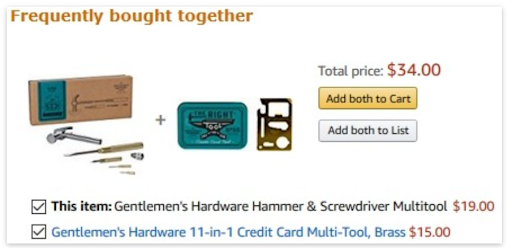
But every business does not have resources like Amazon to implement such measures.
Well, that’s the beauty of it. You don’t need a big engine in place; you can take advantage of customer feedback to give them what they want.
That’s what Avis, a leading car rental company, did to sell more relevant products to customers.
Avis put AWA digital agency in charge to increase the sale of their accessories on their rental cars, such as navigation systems, child seats, insurance, and more.
The team at AWA digital implemented a feedback campaign to use surveys for mapping the most popular car add-ons among the customers and why they wanted them.
Then, the team decided to add an interstitial pop-up at the booking stage to offer upgrades that showed up as most popular on the feedback.
The simple pop-up dramatically increased sales of accessories and revenue per customer for Avis.
Key Takeaways to Use Feedback to Upsell & Cross-Sell:
- Run post-purchase surveys to identify why customers choose that particular product over others.
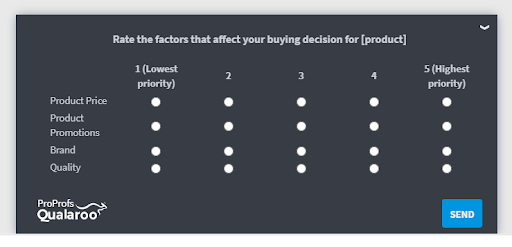
- Ask for feedback when customers return, exchange or cancel an order.

- If possible, implement a personalization tool on your website or app.
- You can then combine the data from product feedback and personalization engine to suggest relevant products to customers to explore upsell and cross-sell opportunities.
- Run promotional mail campaigns to suggest relevant products to the customer based on their purchase history.
Survey Questions to Map Customers’ Purchase Preferences:
- Which product or service would you consider as an alternative to ours?
- Have you ever boycotted a brand? If so, which brand and why?
- Rate our competitor based on the following aspects:
- Have you seen any website/product with a similar feature?
- Do you prefer to do your monthly grocery shopping online or through outlets?
- How do you start to search for the products you wish to buy?
- How do the following factors affect your buying decision for [product name]. Please provide the ratings for each
6. Design Effective Marketing Campaigns
Canon takes advantage of customer feedback to design targeted campaigns for different segments and earn 700% ROI.
Another key benefit of customer feedback is offering the right product valuation to the right audience. Different customer types along your sales pipeline need different marketing strategies to entice them.
For example:
- New visitors usually want to look for product features and what the product does.
- Repeat visitors may want to find something specific to help solve their problems.
- Prospects at the cusp of conversion may want to get a product demo and see discounted pricing options.
So when Canon approached AWA Digital to increase sales in different regions, the first thing the AWA team did was to find out what separated the people in these regions.
The team used customer feedback programs to ascertain product demand in different geographics. The data revealed that people were reluctant to spend too much money on a camera in some regions, while in others, they weren’t aware that Canon was an industry leader worldwide.
Based on the feedback, AWA digital designed different marketing campaigns to resonate with the target cohorts in different locations.
The result was a revenue boost in all the regions, generating an ROI of 700% for Canon.
If you are still not convinced, here are a few more statistics:
- Canon’s worldwide market share is more than Sony, Nikon, and Fuji combined.
- Canon also takes the top spot in camera sales worldwide.
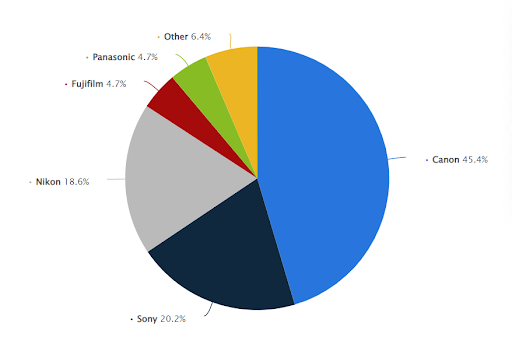
And the VOC programs play an essential part in finding the right product-market fit for Canon.
Key Takeaways From Canon’s Case Study:
- Target customers on your website, app, or product to gauge the demand for new upcoming products and how they feel about your current products.
- Use those insights into your landing pages, marketing campaigns, ads to design unique value propositions.
- You can also run a competition analysis to determine how your products fare compared to your competitors.
- Target your regular customers to find out what separates your products from competitors.
- Uncover what your competitors are doing better than you and implement it at your end. Use questionnaires, interviews, or focus groups to get the answers directly from the customers.
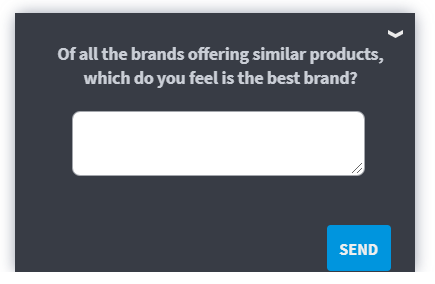
Survey Questions to Collect Feedback Data for Your Campaigns:
- What was your first reaction to our [product name]?
- Would you purchase it if this product were available today?
- Would you purchase the product at [price]?
- According to you, what should be the ideal price range for the product?
- Rate the factors that affect your buying decision for [product
- Do any other factors affect your buying decision for this product category?
- According to you, which brand best fits each of the following traits.
Also Read: How to Write Good Customer Survey Question
7. Improve Customer Experience
ABC Fine Wine & Spirits improves its NPS & CSAT score by optimizing customer experience at all locations
The champion of this story is ABC Fine Wine & Spirits, the owner of over 150 stores. Taking advantage of the customer feedback program, the company compared and monitored the customer experience at each location.
With 3rd party feedback, the company tested the compliance of their delivery standards and measured metrics like immediate greeting, name tags, rewards program, checkout interaction, and more.
In addition, it deployed post-purchase CSAT & NPS surveys to gauge customers’ in-store experience.
Here are some crucial findings:
- The locations that greeted the customers, asked if the customers were members of the rewards program, and offered additional items saw higher average order value and higher engagement.
- These locations also achieved higher NPS and CSAT scores as compared to others.
And when the company used the insights to optimize the customer experience, these were the results:
- 3.5% increase in the overall NPS score
- Higher average order value across all locations
- Improvements in brand’s operating standards
Key Takeaways From ABC Fine Wine’s Feedback Program:
Regularly measure customer experience scores using surveys like NPS, CSAT, CES, product feedback, and more.
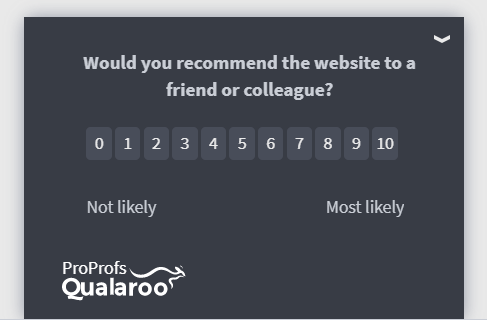
- Use surveys at various touchpoints and interaction channels to get a complete picture of their omnichannel experience.
- Collect customer service feedback to improve the resolution time and efficiency of your support staff.
- Optimize the touchpoints by uncovering their issues and taking the necessary actions.
- Offer a smooth transition from one channel to another to impart a low-effort experience.
- Send personalized notifications to update customers about new arrivals and special offers based on their purchase history.

Here Are Some Survey Questions to Map Customer’s Journey:
MonetizeCX used NPS score to identify churn probability to retain customers and increase revenue from these customers by 10%
- Why did you choose the [product name] over other options?
- What convinced you to purchase from us?
- On a scale of 0-10, how likely are you to purchase a product from us again?
- Please rate the following aspects of the [product name] based on their importance to you.
- Which of the following product features do you use least?
- How well does the [product name] meet your needs?
- Which of the following brands best fits each of the following traits.
- What is the most important value our product offers to you?
8. Increase Retention & Reduce Churn
MonetizeCX used NPS score to identify churn probability to retain customers and increase revenue from these customers by 10%
Increased customer retention and customer lifetime value come as added advantages of customer feedback and experience personalization because people also favor brands that listen to their customers.
What’s more, closing customer feedback loops is one of the top two strategies to reduce churn.

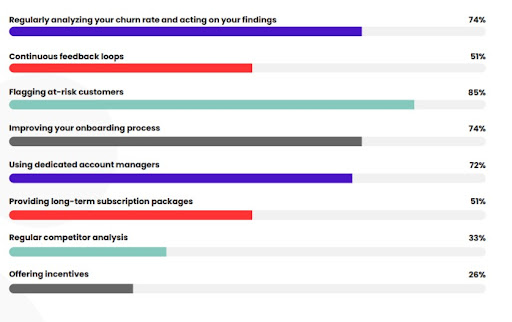
And MonetizeCX demonstrated how to do it.
The team took the NPS scores of the customers and cross-referenced them with their lifetime values.
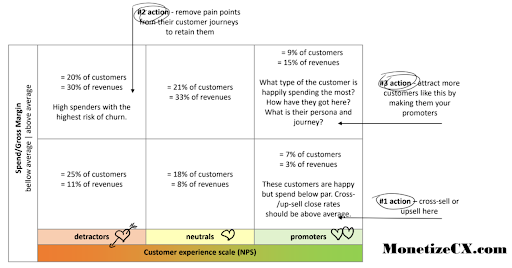
They found that over 20% of the customers who had above-average spending with the brand weren’t happy with it and thus carried a high chance of churn.
Pretty Neat. Right!!!
The next step was to identify the pain points and engage with these customers to build positive relationships.
But that’s not all.
The CX-spend matrix also revealed upselling, cross-selling, and brand promotion opportunities among the high spenders who scored high on the NPS scale.
The results?
- 4% in the customer lifetime value, which amounts to millions of dollars for the client.
- 20% & 5% increase in the CES & NPS scores respectively.
- 11% reduction in customer acquisition cost.
This case study fascinates us because it’s so simple — Just one metric to uncover multiple opportunities.
How to Use CX Scores to Reduce Churn:
- Regularly monitor the NPS & CSAT score to catch any dips and take necessary actions.
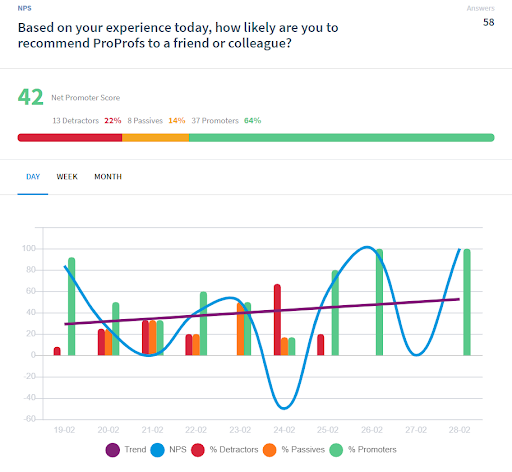
Use these CX metrics to segregate customers based on their experience with the brand, such as satisfied & unsatisfied, promoters & detractors, happy & unhappy, and more.
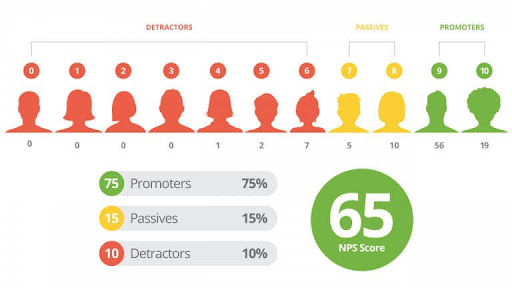

Get in touch with unsatisfied and unhappy customers ASAP to address their issues and change their brand perception.
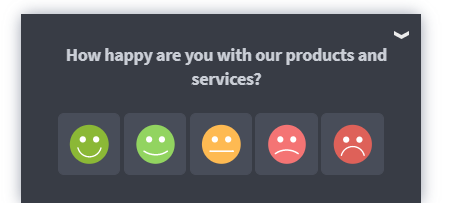
Survey Questions to Collect CX Scores:
- How happy are you with the product?
- Please rate your delivery experience on a scale of 1-5
- How satisfied are you with the support executive?
- How easy did the [brand name] make it for you to get the query resolved?
- Please specify one area in which this product/service lacks the most.
- How does the product perform after the update?
- On a scale of 0 to 10, how likely would you recommend this product to a friend or colleague?
- If yes, what do you like the most about the [product name]?
- If no, please specify the reason.
- How well does the website meet your needs?
- Was the information easy to find?
- How likely are you to purchase a product from this company again?
- Was the information clearly presented?
- Help us make the product better. Please leave your feedback.
Must Read: Customer Satisfaction Metrics to Monitor
9. Generate More Leads
GoodBlogs increased the website registration count by 300% with simple branched surveys.
The all-around benefits of customer feedback not only impact your existing customers but also make way to acquire new leads.
For GoodBlogs, a targeted survey Nudge™ and question branching dramatically increased the subscribers count for its clients. GoodBlogs offers a user-generated content creation platform to different businesses to generate traffic from organic sources.
The team added branch surveys on different blog posts to divert traffic to relevant pages.
For example, if a visitor reads a blog on a horse, the survey asks – Do you own a horse? If the answer is yes, they are redirected to the signup page to receive special offers and brochures on horse products.
How does it work for GoodBlogs?
One such blogging space on their website – The Flaming Vegan, saw an increase of 300% in the number of register
Related Read: 50 Best Lead Generation Tools
Key Takeaways From GoodBlogs Example:
- Look for a tool that offers skip logic or question branching on your surveys to improve data relevancy.
- You can then add follow-up questions to gather more information from the same survey and redirect customers to relevant pages.
- Take advantage of question branching to show only relevant questions to the respondents based on their previous answers. It can prevent survey fatigue, abandonment and produce more reliable results.
Questions to Earn More Leads Using Survey Popups:
- What did you come to this website to do today? Please select from the following.
- Do you want exclusive offers, deals, and product updates to be sent to your inbox as soon as they arrive?
- It’s Christmas. Would you like to register to receive notifications about upcoming deals and offers?
- What were you expecting to find on this page?
10. Uncover Customers’ Pain Points
KingsPoint avoided a $60,000 loss by uncovering a critical issue with the help of customer insights and surveys.
For KingsPoint, the first step towards conversion rate optimization (CRO) is to understand what customers want to improve their experience.
So the team implemented CrazyEgg and survey software Qualaroo to collect customer feedback and uncover customers’ pain points and issues on their website.
Within 2-3 hours, they started getting valuable answers to questions like:
- What information is missing from this page?
- What can we do to improve our website?
- What stopped you from completing your order?
And the results were quite fascinating. They uncovered a critical issue with the checkout process on the Safari browser that would have cost over $60,000 a year to the business.
Key Takeaways to Find & Solve Customers’ Issues:
- Ask the customer directly about the issue they might be facing on the website, app, or product.
- Install a feedback form or feedback sidebar to make it easy to raise issues and complaints.
- Target the leaving visitors using survey pop-ups to find if they could complete the desired actions? If not, try to probe the reason with follow-up questions.
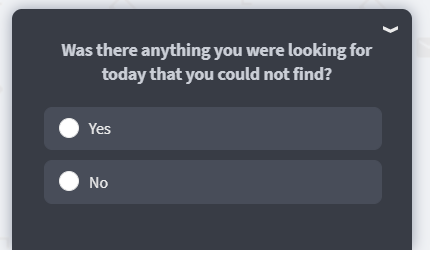
Add an onboarding process to the app or product to educate people about the product features and increase product adoption.
Survey Questions to Uncover Customer Pain Points:
- What information is missing from this page?
- How can we improve our website?
- What could we do to make our website more useful?
- Is there anything that didn’t work the way you expected it to?
- Was there anything about our checkout process that we should improve?
- Is there anything stopping you from completing your purchase?
- What stopped you from completing your order?
- On this page, it seems like I should be able to…
- Does this webpage contain the information you were looking for?
- What’s preventing you from signing up?
- Did something prevent you from doing what you came to the site to do?
11. Increase Revenue
Understanding users’ needs brought 10% more revenue & 4% less cart abandonment for GraphicSprings
Let’s complete the circle with the most obvious benefit of customer feedback and the automatic outcome of implementing VOC programs in your business – An uplift in revenue.
We also understand it’s the ultimate aim of any business.
And GraphicSprings, a leading logo design brand, did that and more. Its CRO team used different surveys on its website to study the users:
- Exit-intent surveys helped the team gather feedback from leaving visitors, collect their emails, and retarget them to decrease cart abandonment by 4%.
- From user experience surveys, the team uncovered a significant issue in the color editing process in the product and fixing that brought in 10% more revenue.
- Using demographic surveys, the team overhauled the website design to suit the customer demographic, leading to an 11% increase in returning visitors.
And there’s more!!!
The benefits of customer feedback trickled down to other metrics as well for GraphicSprings:
- 8% decrease in website bounce rate.
- 7% in CTA click on the homepage.
- 41% in overall revenue.
The company cites the ease of survey implementation and analysis as key reasons behind these results. It helped the team interpret hundreds of responses in less than 24 hours to make informed decisions quickly.
And you can do it too with the right customer feedback tool.
Key Takeaways for Your Customer Feedback Program:
- Target leaving customers to find the gap between their expectations and actual experience.
- Choose the right survey tool for quick implementation and feedback analysis.
Many tools offer advanced response analysis techniques like sentiment analysis and text analytics to make the process easier and faster.
Use Customer Feedback for All-Around Growth
There you have it. A well-rounded list of top benefits of customer feedback programs in your business. But, it doesn’t end here. You would also observe more subtle effects on various other business KPIs and metrics with a dedicated customer insights campaign like a boost in online traffic, higher engagement, reduced pressure on support staff, better product ratings, and more.
And it all starts with the right feedback tool. Advanced survey tools like Qualaroo offer the opportunity to collect omnichannel feedback, so there are no blind spots when it comes to experience optimization. You can design and analyze the feedback data under one screen to take a data-backed approach in your business. And that’s what we call customer-centric growth.
So, try out the methods from these brands to tackle your customer success challenges and see how they impact your business. Remember, the key is to collect the feedback, make improvements and repeat the cycle.
Want insights that improve experience & conversions?
Capture customer feedback to improve customer experience & grow conversions.
